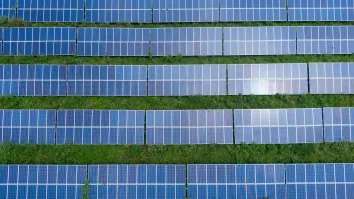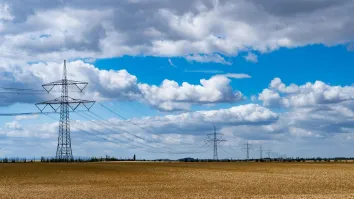Pakistan's energy pathway under the spotlight
By Simon NicholasWith Chinese thermal coal imports set to go into decline, coal exporters are depending on countries like Pakistan to pick up the slack.
Pakistan is expanding its electricity generation capability with Chinese financed and built power plants. China’s role in Pakistan’s infrastructure roll-out, known as the China-Pakistan Economic Corridor (CPEC) is a key part of its Belt and Road Initiative.
Part of CPEC’s significance to China surrounds the building of transport links from China, through Pakistan to the Port of Gwadar – close to the Persian Gulf. This gives China an alternative trade route that avoids the congested sea lanes around Southeast Asia. In any potential future conflict, these sea routes could easily be cut off, halting fossil fuel imports into China – a strategic issue for the Chinese government that CPEC is intended to partially alleviate.
CPEC also involves a build-out of China-backed power plants, helping to solve overcapacity in China as opportunities for such power projects dry up domestically. Pakistan, clearly, is seen as a significant growth destination within the seaborne thermal coal trade as other markets begin to dry up.
The International Energy Agency’s (IEA) recently launched Medium-Term Coal Market Report highlights the role Pakistan is expected to play in propping up declining demand. However, recent events in Pakistan are casting some doubt on this role.
According to the IEA’s Coal Report, seaborne exports of thermal coal will peak in 2019 and then decline as import demand increases in South and Southeast Asia will be insufficient to offset declines in China and Europe.
The IEA foresees China’s thermal coal imports declining 38 million tonnes coal equivalent (Mtce) by 2023 as the nation focuses on domestic coal, gas and renewables. Imports into Europe will decline 28Mtce and Japanese imports will decline by 6Mtce according to the IEA.
These declines will be partially offset by an increase in India’s thermal coal imports (up 16Mtce by 2023). This is despite the Indian government’s repeatedly stated policy of reducing thermal coal imports in the longer term.
For India, reducing coal imports is as much an energy security issue as an economic one. India is amongst the nations that are most dependent on fossil fuel imports, which is as much a strategic issue for India as it is for China.
Aside from the doubtful nature of the IEA’s thermal coal import forecast for India, it is Southeast Asia, Pakistan and Bangladesh where the IEA sees the biggest upside for the seaborne thermal coal market, forecasting a demand increase of 54Mtce across those countries.
IEEFA has previously cast doubt on Bangladesh’s role in supporting seaborne coal demand. Bangladesh’s plans for a fleet of coal-fired power stations are badly delayed, allowing time for renewable energy to take a foothold in the nation as the technology gets ever cheaper.
Growing concern over fossil fuel imports into Pakistan
Now there appears to be growing concern in Pakistan about the negative impacts of relying on imported coal. With the Pakistan rupee significantly weakened, fossil fuel imports are having an even greater negative impact on the nation’s current account balance and foreign currency reserves.
In December 2018, the Energy Minister of Punjab province announced an increased commitment to renewable energy whilst also stating that the boiler at the recently built Sahiwal coal-fired power plant would be replaced to allow it to run on domestic rather than imported coal.
Then in January 2019, it was confirmed that the 1,320 MW Rahim Yar Khan imported coal-fired power proposal had been shelved over concerns about increased fossil fuel imports and stranding power assets through over-build of capacity.
With Pakistan’s economic growth stagnating, there is the possibility of slower-than-expected electricity demand growth going forward and increased chance of excess power capacity standing idle. Relying too much on fossil fuel imports would place further economic pressure on the nation, possibly contributing to muted growth.
With Pakistan apparently alert to the problems of relying too much on fuel imports, there is reportedly a focus on extending the nation’s hydropower build out. A common belief in Pakistan is that extending hydropower is doubly important as the reservoirs behind large dams can help alleviate the nation’s water problems.
A recent report from the World Bank challenges this view. According to the report’s author, “new dams can help improve water security but will not address the most pressing water problems that Pakistan faces.”
The huge expense and long construction times mean that hydro dams are not the best way forward for Pakistan’s power or water future. This is especially true given large hydropower projects tenancy to run significantly over-budget and over-schedule.
However, a faster, cheaper and more energy-secure alternative is available. Sindh province has led Pakistan’s first forays into wind and solar power. Its leadership was confirmed by the January 2019 announcement of US$100m of World Bank funding for further solar power developments.
With wind and solar now the cheapest sources of new power generation in Pakistan, renewable energy should gain increased prominence in the nation's power plans. It is reported that the government is working on a new clean energy policy which will target a significant increase in renewable energy’s share of the energy mix from 5% to 25% within six years, and reaching 30% by 2030.
IEEFA would welcome such a policy as a very positive development that would have significant economic and energy security benefits for the country. In December 2018, IEEFA published an analysis of Pakistan’s electricity market which found that reaching a 30% share of electricity generation from renewables by 2030 is highly achievable.
The rise of renewable energy in Pakistan will lead to even more questions being asked about the wisdom and need for significant coal imports. Meanwhile, Pakistan’s renewables gain would be coal exporters loss. The seaborne thermal coal trade is relying on nations like Pakistan to limit market decline to a moderate level.
The ongoing cost reductions of renewable energy combined with the technology’s economic and energy security benefits are likely to mean that the IEA’s forecast for a small decline in the seaborne thermal coal trade from 2019 is too optimistic.




















 Advertise
Advertise







